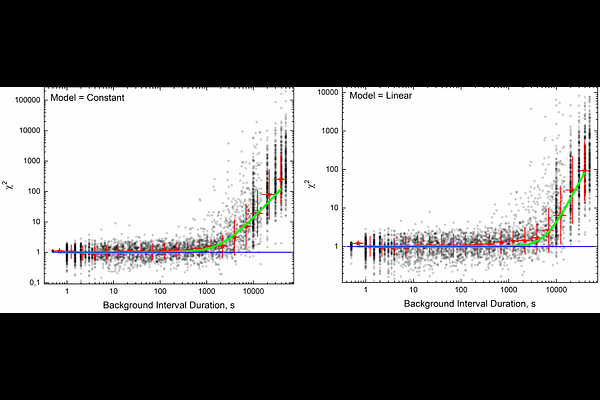Search for Astrophysical Transients on Limiting Time Scales and Their Classification Based on INTEGRAL Data

Search for Astrophysical Transients on Limiting Time Scales and Their Classification Based on INTEGRAL Data
G. Yu. Mozgunov Space Research Institute, Moscow, A. S. Pozanenko Space Research Institute, Moscow National Research University `Higher School of Economics', Moscow, P. Yu. Minaev Space Research Institute, Moscow, I. V. Chelovekov Space Research Institute, Moscow, S. A. Grebenev Space Research Institute, Moscow, A. G. Demin Ioffe Institute, St. Petersburg, A. V. Ridnaya Ioffe Institute, St. Petersburg, D. S. Svinkin Ioffe Institute, St. Petersburg, Yu. R. Temiraev GlowByte Company, Moscow, D. D. Frederiks Ioffe Institute, St. Petersburg
AbstractWe have searched for ultra-long (> 100 s) gamma-ray transients in the data from the anticoincidence shield (ACS) of the SPI gamma-ray spectrometer onboard the INTEGRAL orbital observatory and classified them by machine learning methods. We have found about 4364 candidates for such events in the SPI-ACS data by the `blind' threshold search method. We have developed an algorithm for automatic processing of their light curves that distinguishes a candidate for transients on various time scales and allows its duration and fluence to be determined. The algorithm has been applied to calculate (and compare) the fluxes in the light curves recorded by various INTEGRAL detectors: IREM, SPI-ACS, SPI, ISGRI, and PICsIT. These fluxes have been used to train the classifier based on gradient boosting. Subsequently, we have performed a cluster analysis of the candidates found by the dimensionality reduction and clustering methods. In conclusion we have compared the remaining candidates with the data from the Konus-WIND gamma-ray detectors. Thus, we have confirmed 16 candidates for astrophysical transients, including four candidates for ultra-long gamma-ray bursts from the events detected by the SPI-ACS detector. Out of the probable events, but unconfirmed by other experiments, up to 270 events can be classified as real gamma-ray bursts.